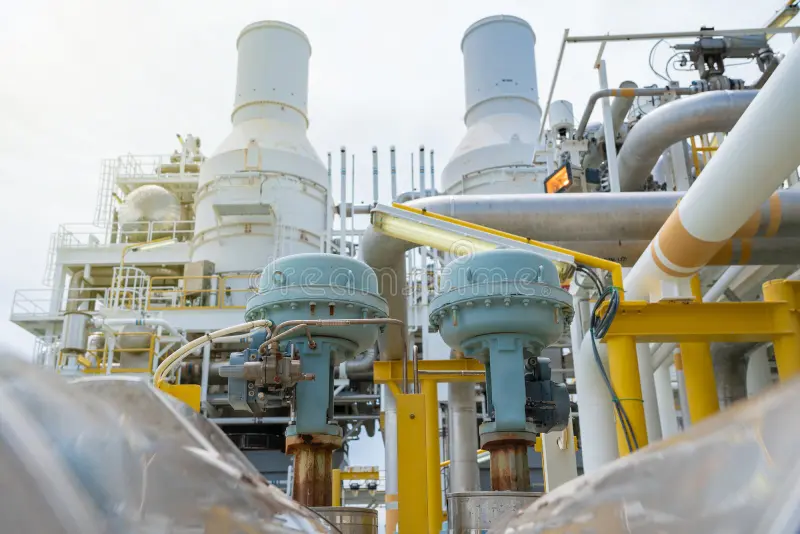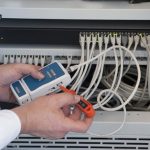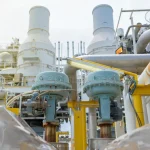Preparing for an EPA Spill Prevention, Control, and Countermeasure (SPCC) audit can be a high-pressure responsibility for any facility manager. The stakes are high, the regulations are complex, and a single oversight can lead to significant penalties. This isn’t just about ticking boxes; it’s about protecting the environment, your company’s reputation, and your bottom line.
This guide is designed to cut through the complexity. We’ll break down the most common and costly SPCC violations inspectors look for and introduce a proven, automated technology that helps you ensure fail-safe compliance. The SPCC rule, formally known as 40 CFR part 112, is the federal regulation designed to prevent oil spills from reaching U.S. waters. Its requirements are strict and non-negotiable.
Ask yourself: Are you confident your facility could pass an unannounced inspection today?
Key Takeaways
- The most frequent SPCC violations often stem from human error, particularly with secondary containment drainage.
- Manual drain valves are a major compliance risk, as leaving one open can lead to a direct discharge and significant fines.
- Automating your stormwater drainage with technology like an oil stop valve eliminates the risk of human error and ensures fail-safe compliance.
- A properly implemented SPCC plan, supported by automated systems, not only prevents fines but also provides operational peace of mind.
The High Stakes of an SPCC Violation
An SPCC violation is not a minor administrative issue—it’s a serious federal offense under the Clean Water Act. The Environmental Protection Agency (EPA) has the authority to issue substantial civil penalties for non-compliance. While specific fines vary, the financial risk is significant, making proactive compliance a critical business investment. According to the EPA’s enforcement data, penalties can quickly escalate for each day a violation continues.
Beyond the direct fines from the EPA, the true cost of a violation can be much higher. Consider the secondary consequences:
- Costly Cleanup Operations: A spill, even a small one, requires immediate and expensive remediation efforts.
- Operational Downtime: Responding to a spill and dealing with regulators can halt production and disrupt your entire operation.
- Damaged Reputation: Environmental violations can permanently damage your company’s public image and relationships with customers and the community.
When you weigh these potential outcomes, it becomes clear that the cost of proactive compliance is minimal compared to the staggering potential cost of a single violation.
Top SPCC Violations Inspectors Find (And How to Avoid Them)
While an SPCC plan has many components, inspectors tend to focus on a few key areas where facilities most often fail. Understanding these common mistakes is the first step toward building a resilient compliance program.
Mistake #1: Improper Management of Secondary Containment Drainage
Secondary containment is the heart of any SPCC plan. It must be able to hold the entire volume of your largest tank, plus sufficient freeboard for precipitation. But here lies a fundamental challenge: the containment area must also have a way to drain accumulated stormwater so it doesn’t lose capacity.
This is where many facilities run into trouble. One of the most common violations cited by EPA inspectors is simply, “Containment drain valves left open.” The standard procedure in facilities with manual systems involves an employee opening a valve to drain rainwater after a storm, and then closing it again. This process is dangerously prone to human error. If an employee forgets to close that valve, you have created a direct, open pathway for a potential oil spill to escape containment and enter the environment.
To eliminate this risk, a fully compliant system must differentiate between stormwater and oil, ensuring only rainwater is released. This is where modern, automated technology provides a fail-safe solution. By installing automatic oil stop valves, you remove human error from the equation and guarantee your containment area functions as intended, 24/7.
Mistake #2: Inadequate or Outdated SPCC Plan
The SPCC plan is the foundational document of your compliance strategy, and inspectors scrutinize it carefully. An outdated or incomplete plan is often the first point of failure during an audit. It’s not a document you can write once and file away.
Your SPCC plan must be a living document. It requires a formal review and update at least once every five years, or anytime your facility undergoes a significant change, such as adding a new tank or modifying your piping. Forgetting this five-year review is an easy, but costly, mistake.
Furthermore, the plan must be certified by a licensed Professional Engineer (PE), unless your facility meets the specific criteria for self-certification. A PE’s stamp confirms that your plan is technically sound and meets all federal requirements. Showing up to an inspection with an uncertified or expired plan is an immediate red flag and a guaranteed violation.
The Fail-Safe Solution: How Automatic Oil Stop Valves Ensure Compliance
Relying on manual procedures for critical compliance tasks introduces unnecessary risk. An automatic oil stop valve is engineered to provide a simple, reliable, and permanent solution to the challenge of secondary containment drainage. It operates automatically, ensuring you are always prepared for a spill and always compliant with drainage regulations.
Eliminating Human Error with Automatic Operation
The genius of the oil stop valve lies in its elegant simplicity. It operates purely on the physical principle of specific gravity and requires no electricity, sensors, or human intervention to function.
Here’s how it works:
- A precisely weighted float sits inside the valve’s chamber.
- When rainwater fills the containment area and enters the valve, the float, being less dense, rises with the heavier water. This keeps the discharge port open, allowing clean stormwater to drain safely.
- In the event of an oil spill, the lighter oil (which has a specific gravity of 0.95 or less) enters the chamber. Because oil is less dense than water, the float sinks. This downward movement instantly closes the valve, sealing the discharge port and securely containing the spill.
This process is completely automatic and passive. It effectively designs human error out of your secondary containment system, ensuring that what needs to be contained stays contained, and what needs to be drained is drained safely.
Key Features for Long-Term Reliability and Low Maintenance
As a facility manager, you need solutions that solve problems without creating new ones. High-maintenance equipment can become just another liability. Oil stop valves are designed for long-term, “set-and-forget” reliability.
Key features that contribute to this durability include:
- One Moving Part: The valve’s design is centered around the internal float—the only moving part. This minimizes potential points of failure and makes maintenance incredibly simple.
- Corrosion-Resistant Materials: Constructed from durable materials like PVC and stainless steel, these valves are built to withstand harsh industrial environments and resist corrosion for years of dependable service.
- Versatile Models: Different models are available to suit specific site needs, including versions designed for colder climates to prevent freezing and options like the “Slave Valve,” which helps manage water evaporation to make the system even more autonomous.
These features make an automatic oil stop valve more than just a piece of equipment; they make it a core component of a long-term, cost-effective compliance strategy.
Final Checklist: Preparing for Your EPA Facility Walkthrough
When an EPA inspector arrives, they will want to do more than just review your paperwork. They will conduct a physical walkthrough of your facility to see your SPCC plan in action. Use this checklist to conduct your own internal audits and spot weaknesses before they do.
An inspector will physically check:
- Integrity of Containment: Are your berms, dikes, and containment walls free of cracks, gaps, or signs of erosion?
- Drainage Valves: In a manual system, are all drainage valves locked and sealed in the closed position? An unlocked valve is a major violation.
- Tank Labeling: Are all tanks clearly labeled with their contents and capacity? Is all signage legible and in good condition?
- Spill Response Equipment: Is your spill response kit easily accessible, fully stocked, and are your employees trained on how to use it?
- Tank Integrity: Are there visible signs of corrosion, leaks, or structural damage on any of your oil-containing tanks or equipment?
Walking your site with this checklist helps you see your facility through an inspector’s eyes. When an inspector sees a properly installed automatic oil stop valve, it provides immediate, visual confirmation that you have a proactive and compliant system for managing stormwater—one that doesn’t rely on a fallible manual process.
Conclusion
Passing your next SPCC audit requires moving beyond manual, error-prone procedures, especially when it comes to the critical task of secondary containment drainage. The risk of human error is too high and the penalties for failure are too severe to leave to chance.
An automatic oil stop valve isn’t just another piece of hardware; it’s a strategic investment in guaranteed compliance, environmental protection, and operational peace of mind. It allows you to focus on running your facility, confident that your most critical spill prevention system is always ready.
With the right systems in place, an SPCC audit is no longer a source of stress, but an opportunity to demonstrate your commitment to safety and compliance.










